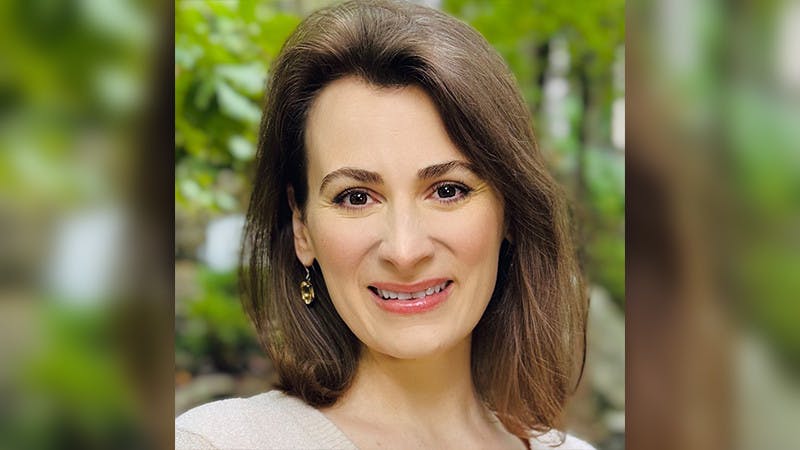
When tech companies like Apple and Google announced their plans to develop digital contact tracing that uses Bluetooth communications to track the spread of COVID-19, there were many debates over the efficacy and necessity of this program.
As it turns out, digital contact tracing – using anonymous data to tell smartphone users if they have encountered someone who has tested positive – is significantly helpful for fighting this pandemic. The Centers for Disease Control and Prevention stated that contact tracing “is a key strategy for preventing further spread of COVID-19.” Implementation of similar programs has been successful in Southeast Asia, most notably in South Korea and Singapore. Beyond aggressive testing, big data analytics could help us track the spread of the virus and forecast accurate infection risks through the development of existing mobile technologies. If we have a transparent contact tracing system that works to secure our privacy, that can allow for more precise risk assessment and lead to better medical management practices.
Before the United States fully implements mobile technologies to detect and mitigate the spread of COVID-19, it has to address the health inequities in America’s vulnerable communities.
Populations become vulnerable when they face inequalities in access to resources and health care. People of color, people who are incarcerated, and the homeless are witnessing their disparities amplify during this pandemic. Currently, these individuals are at a higher risk for developing complications from COVID-19 due to unequal access to health care and other resources such as personal protective equipment, which includes protective clothing, gloves, face masks, and helmets.
The low availability levels of resources for our most vulnerable communities are inherently exposing inequities in our country, and if not properly addressed, could lead to worse outcomes.
Health programs for communities of color, especially Native Americans, have been “chronically underfunded by Congress,” and approximately a “quarter of Native Americans reported experiencing discrimination when going to a doctor or health clinic,” according to NPR.
The New York Times reported that Latinx people may be “more vulnerable to the virus as a result of the same factors that have put minorities at risk,” including “low-paying service jobs” that require them to interact with the public even during the pandemic, and inadequate access to health care.
In addition, an analysis by The Washington Post revealed that counties that are majority-Black have "three times the rate of infections and almost six times the rate of deaths as counties where white residents are in the majority.”
The Times also reported that President Trump, acknowledging that these populations are facing enormous disparities and experiencing higher death rates, said that “federal authorities were working to provide statistics” to help the issue.
However, technology and surveillance methods are ingrained in the problem of social disparities.
Firstly, we must consider how many people do not have access to technology, the Internet, or smartphones. According to the Post, “more than 21 million Americans do not have access to high-speed Internet.” The lack of connectivity poses a heavy burden on students who may struggle to complete their coursework because of technological barriers – “illustrating how a public health crisis has brought to light a technological one.”
In addition, the digital gap is glaring for rural and disabled communities – 15% of rural adults said they never go online and 27% of disabled adults have never used the Internet. And those who are homeless or incarcerated have limited access to smartphone technology.
Going beyond the digital gap, gathering COVID-19 statistics presents another area of concern. According to The Guardian, state health departments are either not including Native Americans in their racial demographic data, or categorizing them as “Other.” This is a huge problem because racial misclassification and improper data collection can raise barriers for access to testing and treatment, which is crucial for controlling the spread of COVID-19.
In order to track the spread of the virus and distribute resources – such as food and clean water, PPE, and testing kits – to those in need, it is a fundamental necessity to establish uniform surveillance methods and further develop treatment protocols to expand access.
The Navajo Nation has the highest per-capita COVID-19 infection rate after New York and New Jersey, but the Guardian reported that the federal response has been slow and inadequate. Currently, 30% of the population does not have running water in their homes, according to CBS News, and a Los Angeles Times report found that many Navajo Nation residents rarely have access to the Internet or TV news.
Smartphone technology and other platforms should work to include everyone. Larry Echo-Hawk, a Native American speaker and attorney who served as the U.S. Assistant Secretary of the Interior for Indian Affairs under the Obama Administration, said, “if you eliminate us in the data, we don’t exist. We don’t exist for the allocation of resources.”
Surveillance is more than managing Americans, it is about caring for people. Once we direct our attention to the misclassification and exclusion of minorities, we must come together to establish policies to minimize inequities by discussing worker protection, equal access to infection and antibody testing, and telehealth to reduce the burdens of accessing quality care.
As we develop digital contact tracing, big tech cannot miss huge populations in its data collection. These communities deserve our attention because the disparities they face have existed for a while. Right now, they need assistance and proper allocation of resources.
MARY SHIN is a rising College junior majoring in Science, Technology, and Society with a minor in Consumer Psychology. Her email address is shinmary@sas.upenn.edu.
The Daily Pennsylvanian is an independent, student-run newspaper. Please consider making a donation to support the coverage that shapes the University. Your generosity ensures a future of strong journalism at Penn.
Donate





